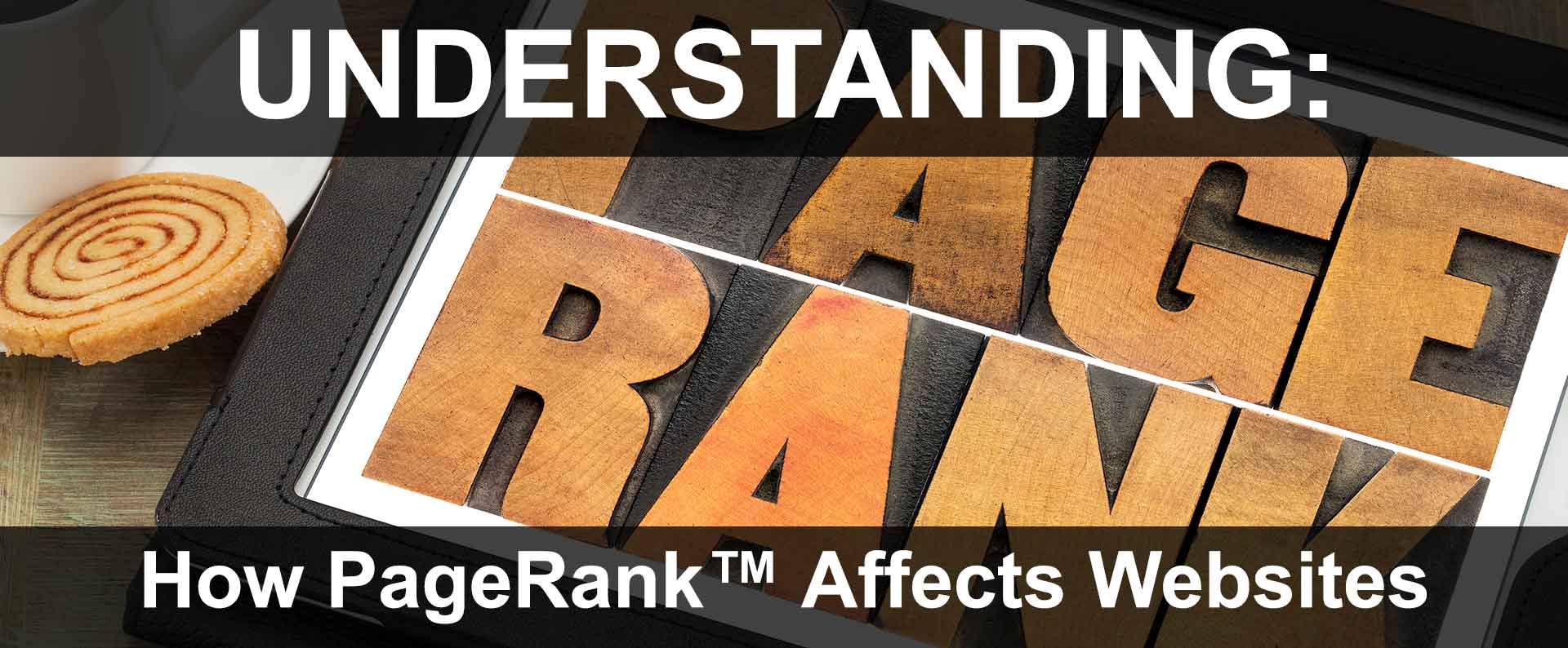What Is PageRank™
First, let's define PageRank. PageRank is a term trademarked by Google and developed by Google employee Larry Page.
PageRank is a numeric value assigned to a website to designate popularity amongst websites. Wikipedia gives an in-depth explanation of the algorithm usage.
There are some who believe PageRank is dead or dying; being replaced by social media seo signals (how popular a page is within the different social media platforms).
However, there are still many others who believe PageRank is alive and simply used internally now by Google; with good cause and reason. Chelsea Adams recently put it quite eloquently and matter-of-factly in her article comments recently:
"I think Google will always be working to discern and deliver 'quality, trustworthy' content . . . Why would they? If the president of the United States links to your page that is undoubtedly an endorsement that tells Google you’re a legitimate trusted source. I know that is an extreme example, but I think it illustrates the principals of a linking-as-endorsement model well."
It makes sense for Google to still have PageRank hold some value in determining the popularity of a website's intrinsic link value. There are numerous factors that come into play with ranking, and PageRank will probably always have some value.
When neck and neck with a competitor for first place ranking, a "smaller" factor such as PageRank, may be what pushes a site to edge out the competition.
According to some internet sources, the last PageRank update published by Google was December 2013. While the public is not expected to see any further updates, Google will certainly continue adjusting it's PageRank algorithm internally.
Measuring PageRank™
This measure of popularity is determined by incoming links which Googles considers to be "votes" for that particular page. PageRank does not apply to a website as a whole, but instead applies to each individual page within a website. Each website page will have its own PageRank.
In the past it was thought these votes were tallied and averaged once every three months to determine a website's PageRank value 1 through 10. Since nothing about PageRank is shared with developers or the public anymore, no one knows for sure except Google.
Here is Google's explanation of PageRank:
PageRank relies on the uniquely democratic nature of the web by using its vast link structure as an indicator of an individual page's value. In essence, Google interprets a link from page A to page B as a vote, by page A, for page B.
Many people have the impression that Google's PageRank has to do with such things as:
- Where a website shows up in search results
- Whether a website has good keywords and key phrases
- If a website has relevant content on a subject
- Among other aspects
While all these factors do come into play in determining where a website ultimately shows up in general search results on Google (for example, number 3 instead of 9,765 for a term or phrase); Google's PageRank is nothing more than a website page's overall-worldwide popularity on a scale of 1 to 10 with 10 being the most popular.
Google uses "incoming links" as a guide to help establish PageRank. The more quality, incoming links (votes) a website has, the better PageRank the webpage will receive.
Google does not punish a website for incoming links from spam or link farms since no one can control who links to a website. However, since the PageRank of such spam or link farms is often 0 or null, the benefit of "votes" or incoming links from these sites is negated if not completely voided as Google considers such sites a type of fraud or spam.
The following is a breakdown of how PageRank seems to be measured:
- PR0 - Stinker. Google knows you exist, but that is about it.
- PR1 - Could be better. Your site’s getting indexed by Google, but you may want to work on this.
- PR2 - Below average on the world wide web.
- PR3 - Average on the web. Most sites you see on the web have a PR3.
- PR4 - Above average. You’ve likely been conscious about getting your site out there a bit.
- PR5 - Good. A PR5 may land you on the first page of some search results, pat yourself on the back.
- PR6 - Great. You've obviously done some work on your SEO. You'll be able to contend for some top positions.
- PR7 - You're big! If you’ve got a PR7, consider yourself a top site. Most medium size businesses would do well to dream of a PR7.
- PR8 - You’re huge. MSNBC.com and ESPN.go.com have a PR8.
- PR9 - Your bigger than MSNBC, like Yahoo.com, Twitter.com and NYTimes.com.
- PR10 - You’re at the top, we all know it: Google.com, Facebook.com and CNN.com are in your posse.
An incoming link's PageRank helps determine a web page's PageRank. Incoming links from high PageRank sites are extremely beneficial to securing a high PageRank.
Improving PageRank™
Besides the obvious techniques to improving overall ranking in search engines (such as improving content and keywords,) improving the incoming links to a website is essential to increasing a website page's PageRank with Google.
There are no shortcuts to improving a web page's overall PageRank. The best method is to post content that people find useful and want to link to. This method is the best for naturally and organically improving a web page's link popularity. When Google sees a page that has hundreds or thousands of different sites linking to it, the PageRank for that site will skyrocket.
While there are no shortcuts to a higher PageRank and popularity, there are methods one can take to effectively improve overall visability, and opportunity for the web page content to be seen, and eventually linked to.
Incoming links from some of the following types of sites can be beneficial in increasing a website page's PageRank, as well as increasing the opportunity for others to find the content to link to:
- Social Media Posts Linking to Page
- Industry Related Directory Websites
- Related Manufacturer Websites
- Related Vendor Websites
- Related Service Providers
- Industry Related Consumer Reporting Websites
- Industry Related Business Reporting Websites
- Industry Related Chat or Discussion Boards
- Industry Related Online Magazine or News Websites
- Industry Related Retail or Business Websites (Not competitors, but complimentary businesses)
Regardless of industry, there are many legitimate and helpful companies to whom one can turn to and request incoming links. Most businesses probably already work with a number of vendors, manufacturers, service providers or complimentary business to whom they can request a link trade.
Often link trades are provided within a website's resource library section. Because website resource libraries are often full of valuable information and often linked to voraciously, these sections of a website will often have a higher PageRank to begin with.
Summing Up PageRank™
A high PageRank is just one factor of many, but can certainly help edge out the competition in search results. However, it does not mean that a website will not be listed first or second in search results for a particular search term.
Google and other search engines consider website content to be the most important of all factors when listing websites in search results. PageRank, among other factors, just help to solidify an already strong web ranking position.
A website can have a PageRank of 1 and still come up as the first result in a website search pending the content found on that website is most relevant to the term being searched. Websites that appear to be "encyclopedias" on a given topic almost always receive top listing in search results regardless of the PageRank assigned.













